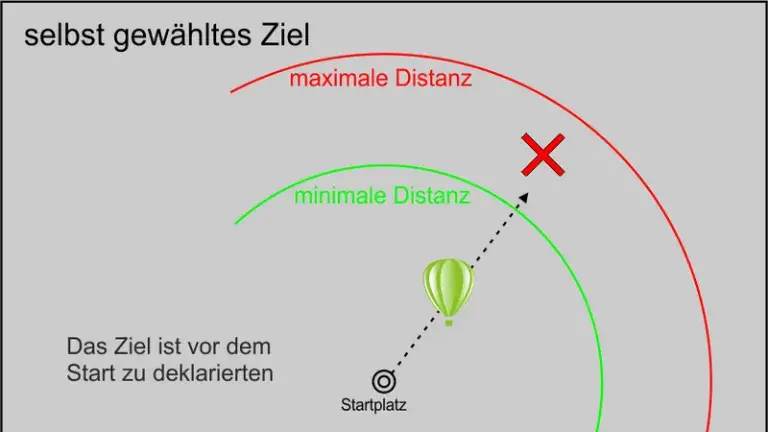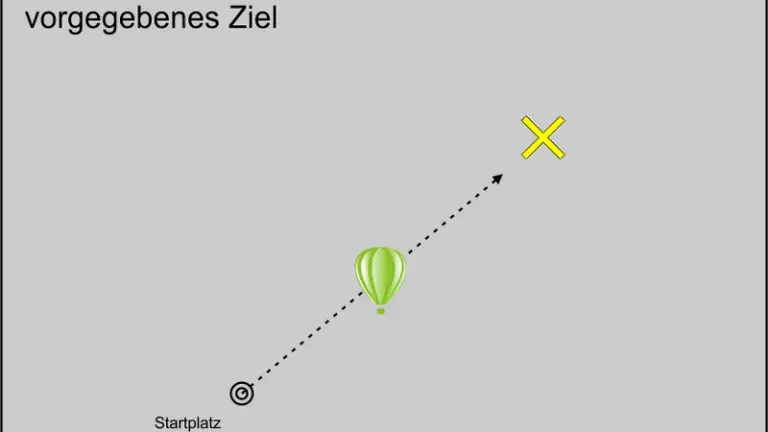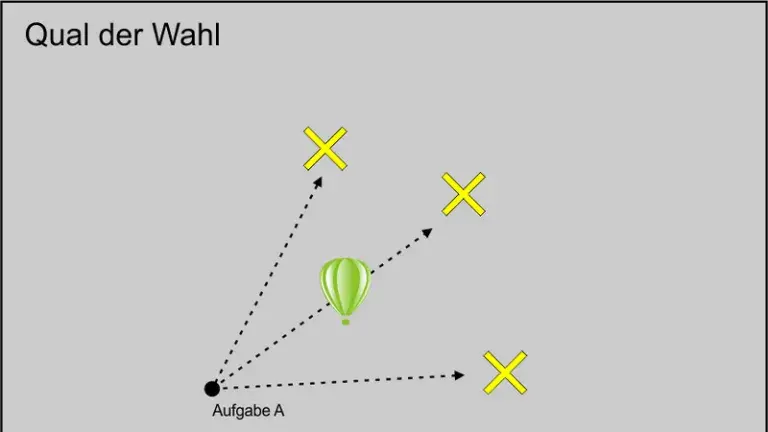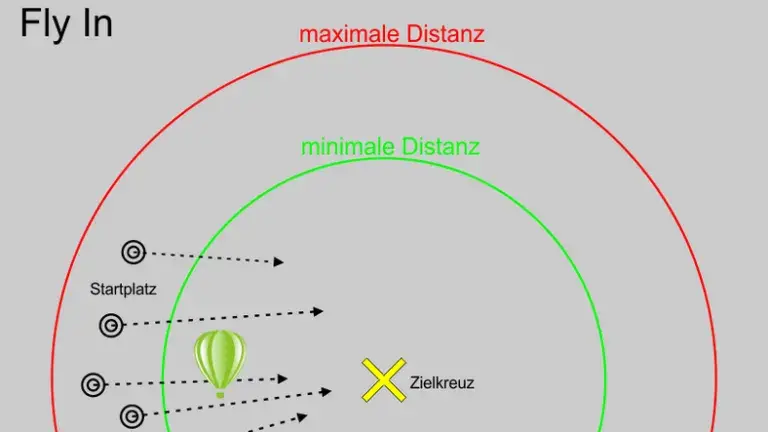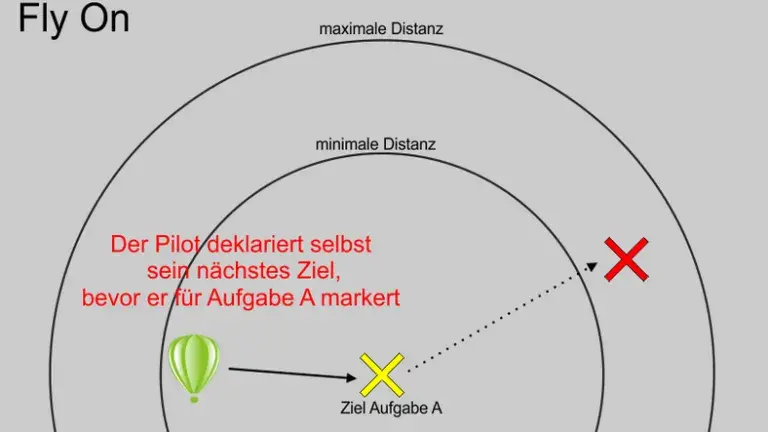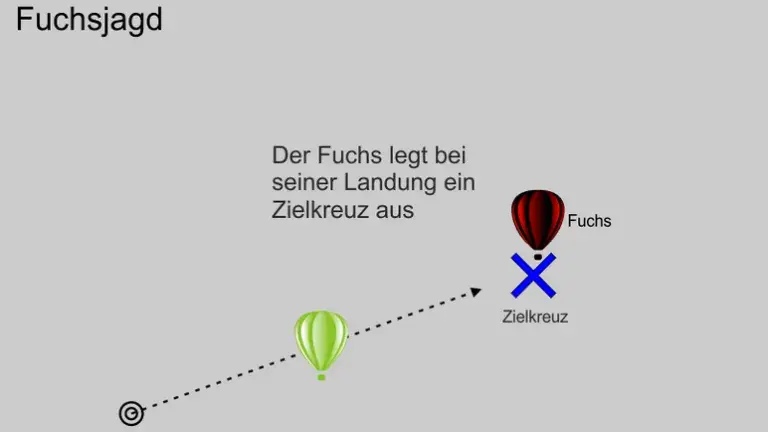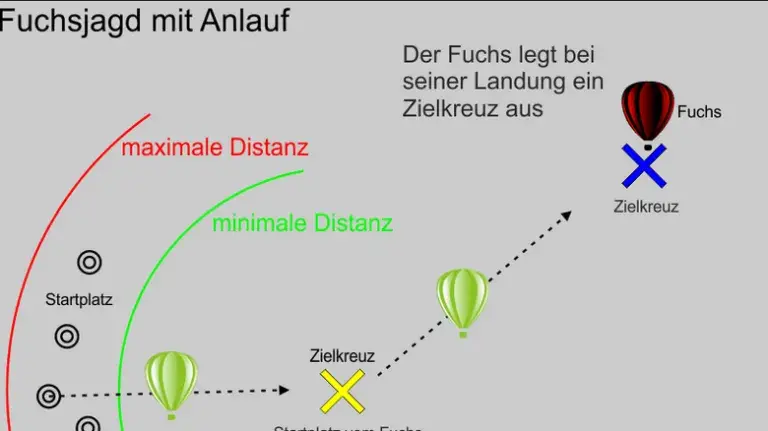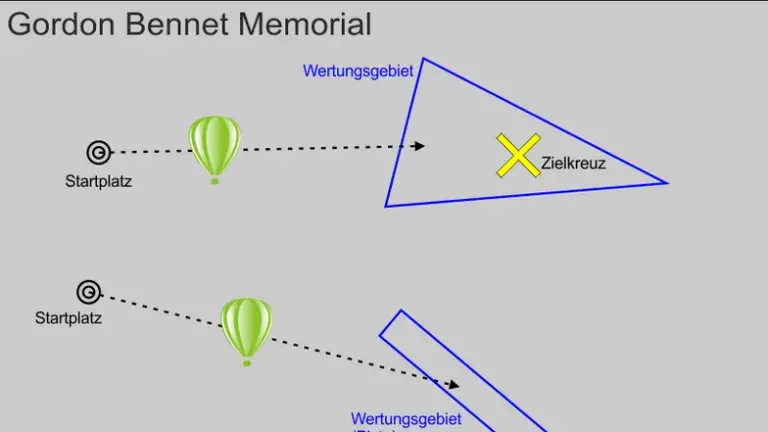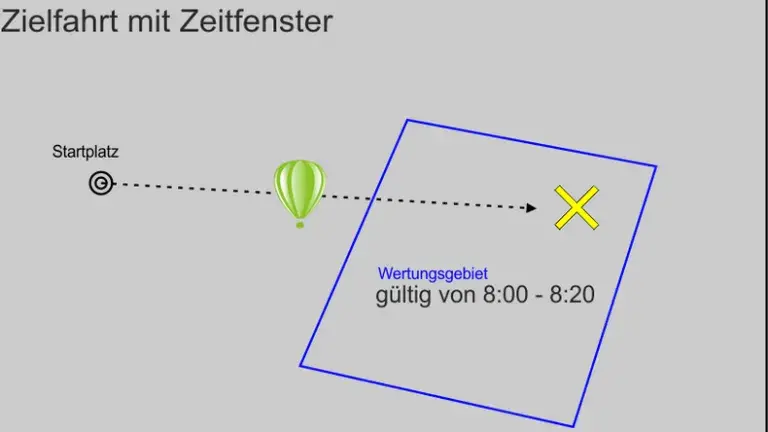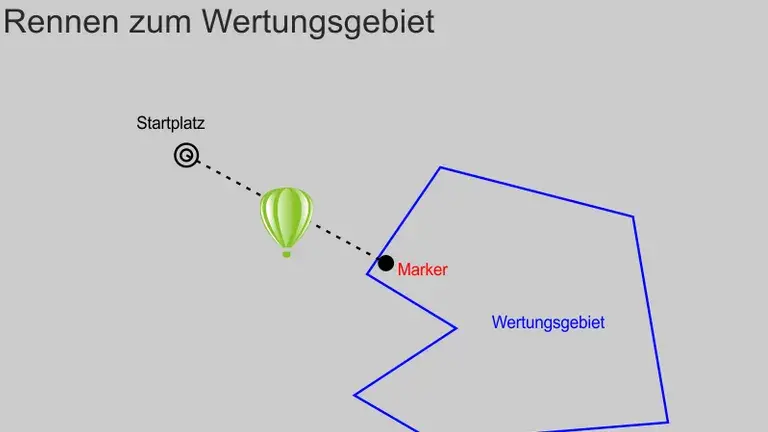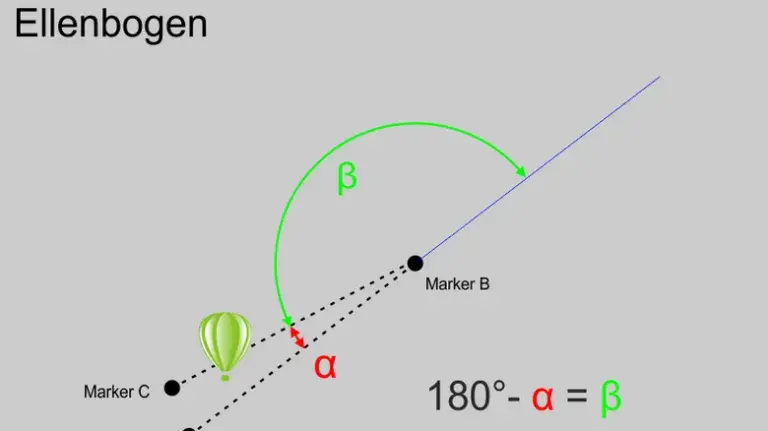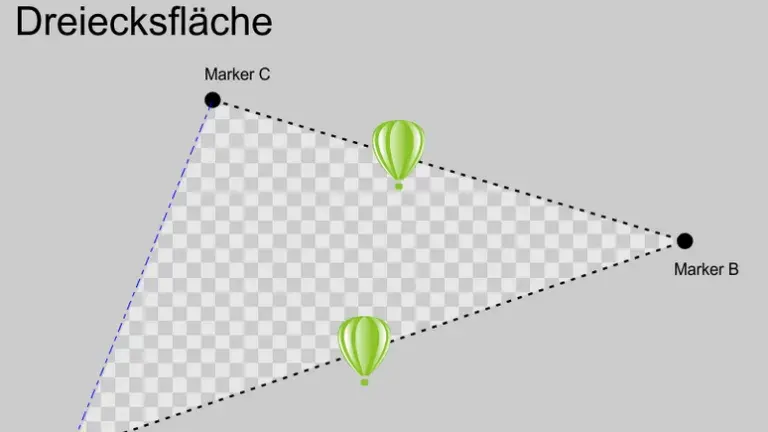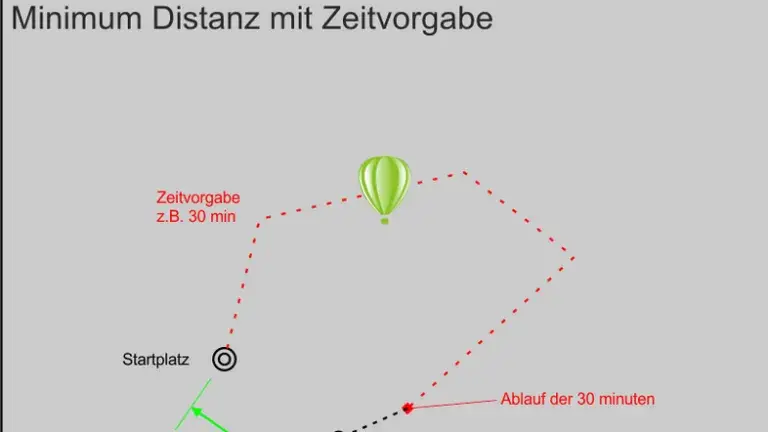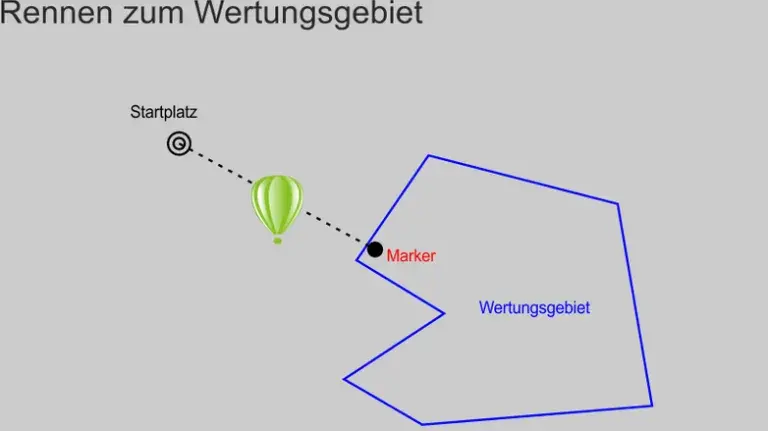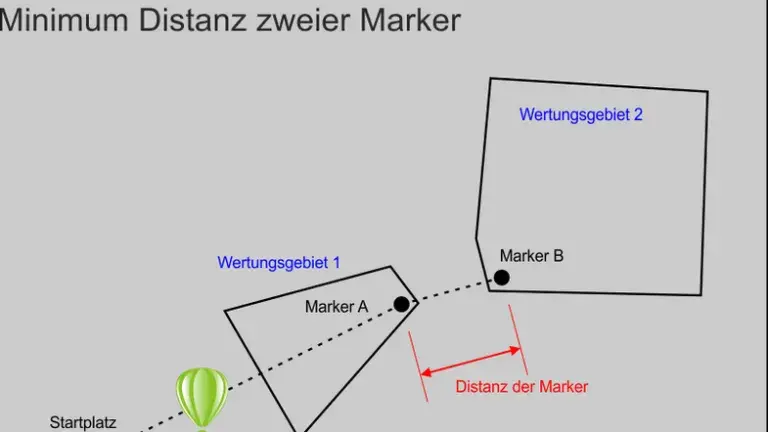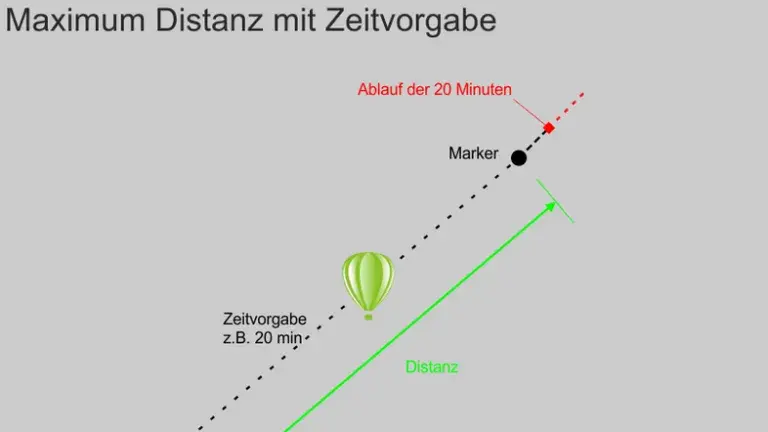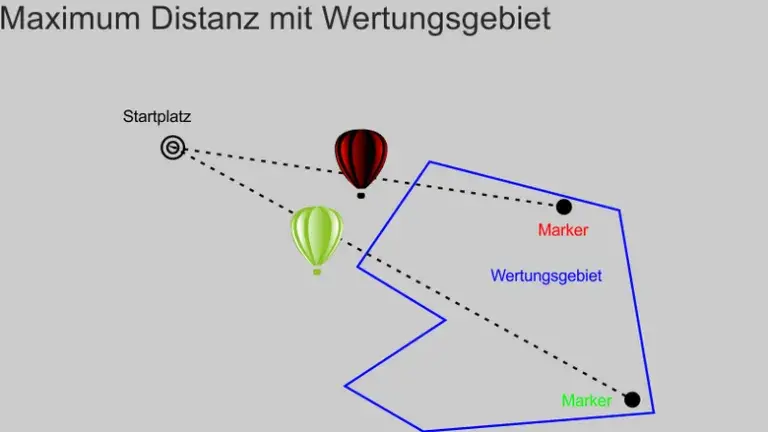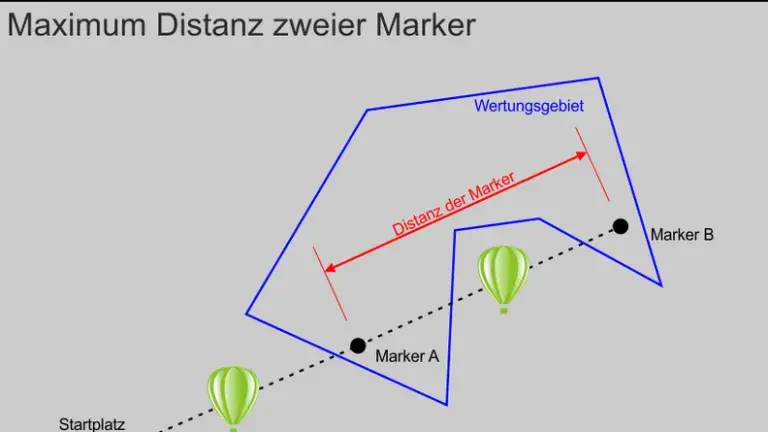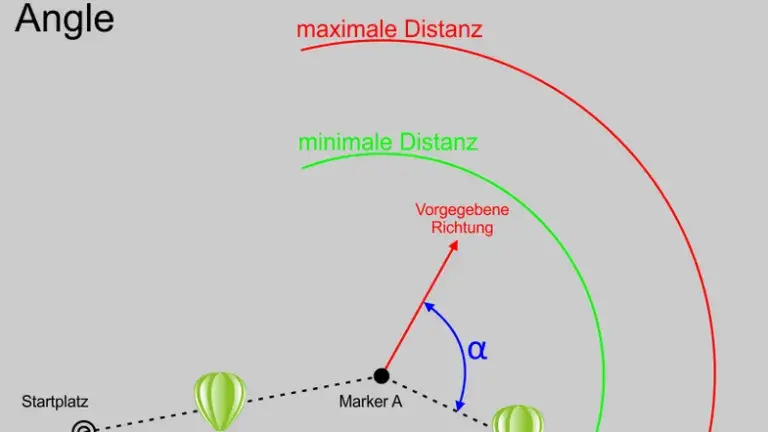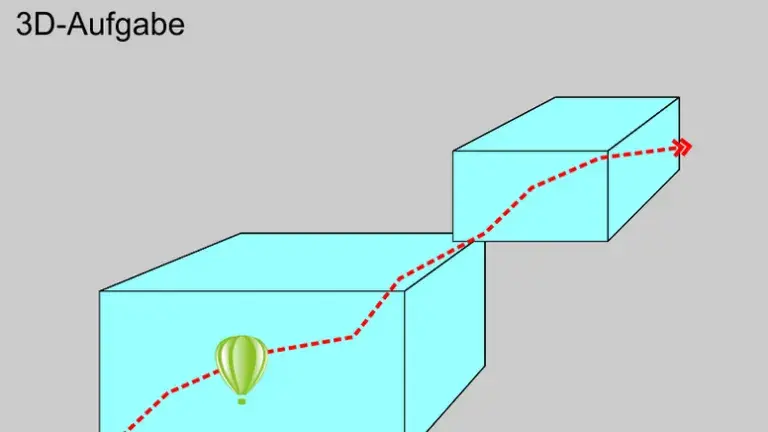15.3 THE AGONY OF CHOICE (HWZ)
Competitors try to place a marker as close as possible to one of several predefined targets. He does not have to determine the destination beforehand, but decides during the journey which marker he wants to drive to. The result is the distance from the measuring point to the nearest destination.
15.5 FLY ON (FON)
The competitor must write his chosen Fly On target(s) clearly on the previous marker. If the previous marker is not removed or there is no target on it or more than the allowed targets are declared, the competitor will not get a result. Nowadays, the declaration is made by entering it in the FAI logger. The smallest result wins.
15.6 FOX HUNTING (HNH)
A fox balloon starts with a time advantage. When it lands, it places a target cross at the landing point. The participants try to drop their marker as close as possible to this target cross. The result is the distance from the measuring point to the target cross. The smallest result wins.
15.7 FOX HUNT WITH START (WSD)
The competitors drive a FLY IN with the balloon from a self-chosen starting place to the starting place of a fox balloon, follow it and try to place a marker as close as possible to a target cross laid out by the fox. The result is the distance from the measuring point to the target cross. The smallest result wins.
15.8 GORDEN BENNETT MEMORIAL (GBM)
15.9 DESTINATION WITH TIME WINDOW (CTR)
Competitors attempt to drop a marker in a valid scoring area as close as possible to one or more target crosses. The scoring areas are assigned clear time periods in which they are valid. The result is the distance from the measuring point to the target. The smallest result wins. A competitor who does not generate a measuring point within a scoring area during its validity period does not achieve a result.
15.10 RACE TO THE SCORING AREA (RTA)
The competitors try to place a marker or generate a valid trackpoint in one (several) scoring areas or airspaces after a very short time, as specified in the task data. The result is the time from start to placement of the marker or the first valid track point. The smallest result wins.
15.11 ELBOW (ELB)
The competitors try to achieve the greatest possible change of direction during the journey. Three measuring points are generated. Point A is normally given, e.g. the marker of the previous task. The points B and C are two markers which are placed in the task. After creating point A, move the first leg of the elbow to the left as far as possible, place marker B and move the second leg to the right as far as possible. The leg lengths are given as distance or time. The result is 180 degrees minus the angle ABC. The largest result wins.
15.13 MINIMUM DISTANCE WITH TIME LIMIT (MDT)
The competitors try to place a marker as close as possible to the CLP (starting point) or to create a valid track point after they have driven for at least a specified period of time. The result is the distance from the measuring point or nearest valid track point to the CLP. The smallest result wins. The measurement point or the best track point is scored after the specified minimum time span has been exceeded.
15.14 MINIMUM DISTANCE WITH SCORING AREA (SFL)
The competitors try to place a marker as close as possible to the CLP (starting point) or to create a valid track point within one (several) scoring areas. The result is the distance from the measuring point or closest valid track point to the CLP. The smallest result wins.
15.15 MINIMUM DISTANCE TWO MARKERS (MDD)
The competitors try to place two markers as close as possible to each other, in different scoring areas, or to create two valid track points. The result is the distance between the measuring points or track points. The smallest result wins.
Competitors do not achieve a result unless they have valid track points or measuring points in different scoring areas according to the task sheet.
15.16 MAXIMUM DISTANCE WITH TIMER (XDT)
The competitors try to place a marker as far as possible from the start reference point or to create a valid track point within a given period of time. The result is the distance from the measuring point or from the farthest valid track point to the start reference point. The largest result wins.
15.17 MAXIMUM DISTANCE WITH SCORING AREA (XDI)
The competitors try to place a marker as far as possible from the CLP (starting point) or to create a valid track point within a (multiple) scoring area. The result is the distance from the measuring point or valid track point to the CLP. The largest result wins.
15.20 3D TASK (3DT)
This is a new task, which is only possible thanks to state-of-the-art technology (GPS logger). The competition director defines an area of the airspace (box). The pilots must try to cover as long a distance as possible in this airspace. The result is a summed 2D distance between valid track points within the defined airspace. The largest result wins.
We were allowed to take over contents from Ballonsportclub Oststeiermark - thank you very much!

